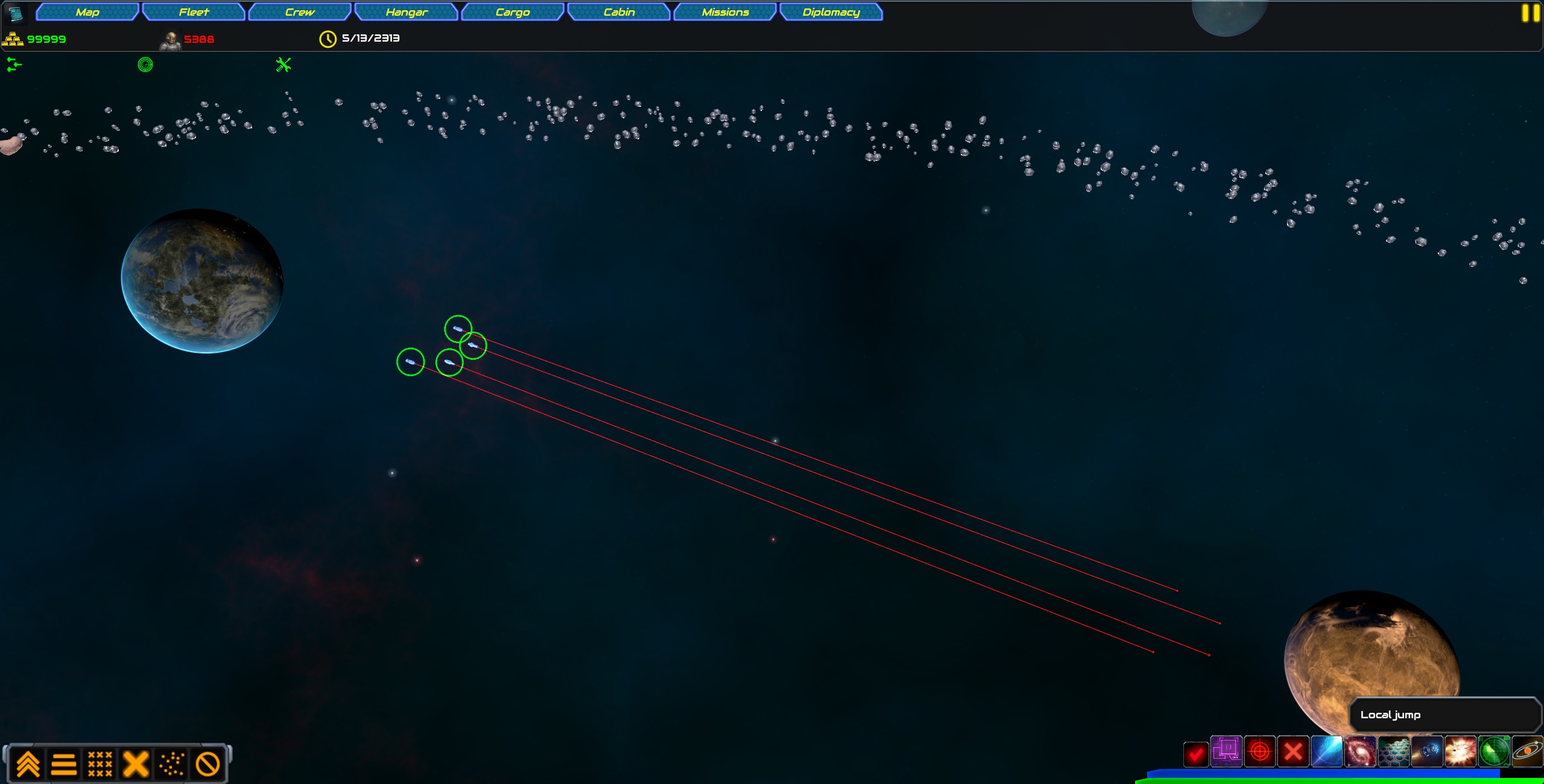Hello everybody, in this second post of the dev blog I am going to describe parts of the gameplay in a little more detail and particularly the aspects related to the scale of the galaxy map and the action scene.
Keywords: local vs global warp jump, galactic map, simultaneous warp jump
Two of the most important scenes of the game are the action scene where the action e.g. space combat, trade, dialogues with NPCs, etc. takes place and the map scene (yep you guessed it), that is the galaxy map where one can see details about the discovered solar systems and the lanes connecting them. One of the goals of the game is the exploration of the various types of solar systems that are interconnected with lanes via warp jumping.
During the early stages of the development those two scenes were unified into one. This means that the player could zoom using the free camera from the galactic view to a particular map object (e.g. a planet, star or a spaceship) and back. This was cool but it created the problem that the individual solar systems should be much smaller due to the limited precision (floating point errors) of the game engine. This is of course a very well known problem with various implications and solutions. My solution to this problem was not technical but rather one additional gameplay rule was added. That is that the player should always be focused on a specific solar system (the action solar system) and the player's fleet would always be within the confines of this specific solar system or traveling towards it (some spaceships may jump earlier to the target solar system than others) . This allowed me to separate the initial scene to an action scene and a map scene as is described above and give the action solar system a semi-realistic scale with large planets and tiny spaceships after all space is huge.
After doing that I immediately stumbled upon another problem. Now the action scene was large, the spaceships were small and the impulse speed should also be small (otherwise the space combat wouldn't be fun) and there goes the second scale problem which is not technical but rather gameplay related. Because no player would be willing to wait 10 minutes to travel from planet A to planet B. So the idea of local jump was born.

So you want me to wait 2 minutes in order my fleet to move from planet A to planet B? Ain't nobody got time for that. So the idea of the local jump was born.
To summarize, most of the ships (except from the very small vessels like fighters and bombers but those are usually within a hangar bay) are capable of warp jumping (global jump) between solar systems and but also between locations of the action solar system (local jump) and the impulse speed is used mainly for interactions between fleets e.g. space combat, dialogues with NPCs, orbiting a planet or a star and related things.
It is also possible to order some of the ships within a fleet to warp jump to another solar system at a different time than the rest of the fleet. For example When a fleet is warp jumping between two solar systems not simultaneously e.g. vessel A first and vessel B 30 seconds later, the vessel B will arrive at its destination 30 seconds later that the vessel A. but the player will have control of the vessel A from the time it arrives. During this transition starting from the moment that the last spaceship left the action solar system, the player would be automatically be transferred to the map scene where he/she is going to watch the fleet going from the previous to the next solar system (takes a couple of seconds).

Spaceships can be ordered to local or global warp jump simultaneously or not. When a fleet is warp jumping between two solar systems not simultaneously e.g. vessel A first and vessel B second after 30 seconds, the vessel B will arrive 30 seconds later at its destination that the vessel A but the player will have control of the vessel A from the time it arrives with whatever implications this might have.
Of course warp jump (local and global) uses energy which depends on the distance traversed. Energy is a direct resource on this game which is converted from antimatter which is another resource (more in a later post).
That's all for today and thank you for reading. The post next week would be probably about the available types of weapons.
Any constructive criticism is very welcomed.
Tensorial



